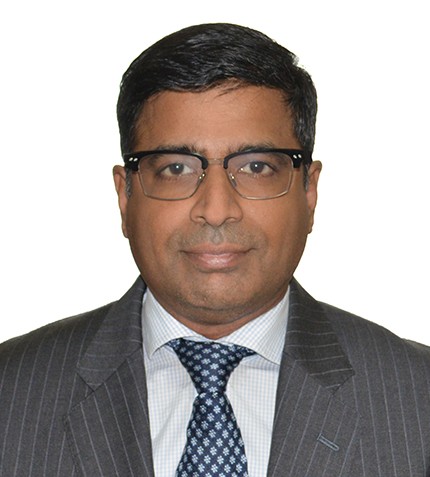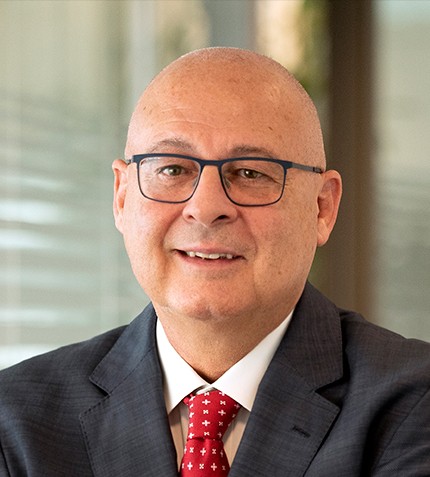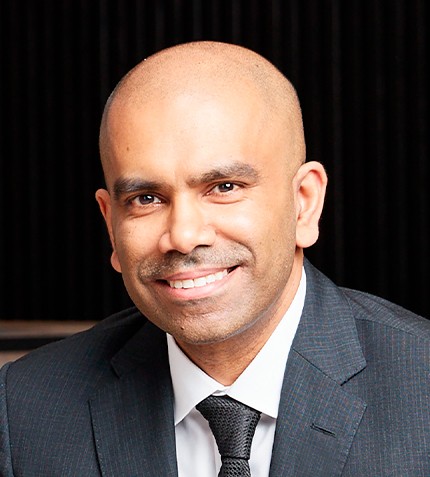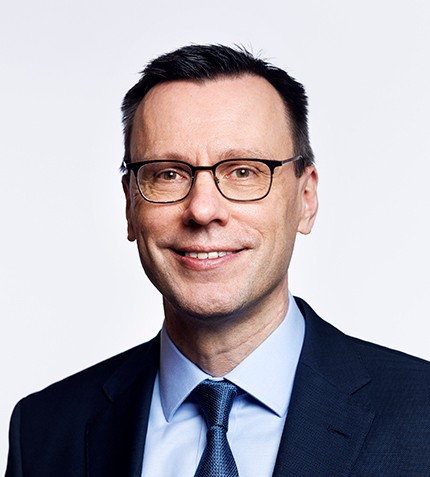
"Linde is present in both green and blue hydrogen pathways, and we are committed to support Jurong Island players taking concrete steps."
Ganapathy Swamy
MD SINGAPORE AND HEAD OF ONSITE ACCOUNTS, LINDE ASEAN
Could you bring us up to date with the latest developments at Linde in Singapore?
Linde has strengthened its position in the semiconductor market. Early this year Linde announced a new agreement to supply high-purity industrial gases to a leading semiconductor manufacturer in Singapore. We expect the new plant for ultra-high-purity nitrogen and oxygen to be operating in late 2022. Linde’s US$1.4 billion investment at our integrated gasification complex on Jurong Island is progressing well to be completed in 2023. Because large plants like this are built with modular blocks imported into Singapore through huge barges, the construction has not been without its logistical challenges, all of which we have thankfully overcome.
What are the key growth sectors for Linde in ASEAN?
There are pockets of opportunity in multiple other markets, like food, metals and construction sectors in the ASEAN countries creating more opportunities for us.
How do you think global supply chains will be organized following the pandemic?
The past two years have opened serious questions about how globalized supply chains should be and, while there is no doubt globalization is necessary, certain caution needs to be applied. Our strategy is to diversify not only in terms of value creation but also in terms of our local footprint to make sure we are resilient against global shocks and that we stay close to our customers. Moreover, Linde offers complex molecules that require specialist know-how around chemistry, safe handling and transportation, so this kind of special care and attention is also tailored around being closer to the customer. Singapore is not only one of the biggest gas markets in the region, but also serves as a critical hub to serve the wider region.
How is the uptake of green and blue hydrogen evolving in Singapore?
Singapore is mostly focusing on “greening” the electricity supply system through imports of green hydrogen or renewable power. On the industrial side, our Jurong Island customer base is motivated to cut down GHG emissions, consistent with our own goals. Moreover, the government’s plan to increase the carbon tax up to 16 times by 2030 is sending a strong message across the manufacturing sector. The carbon tax is a deliberate action that will propel a lot more movement into blue and green hydrogen by 2030. Of course, green hydrogen (made from renewables) is the right thing to do, but today Singapore’s energy is mostly based on natural gas, so it is a long way to get to green hydrogen. Blue hydrogen and CO2 capture, on the other hand, are more accessible and could yield results sooner. Linde is present in both green and blue hydrogen pathways, and we are committed to support Jurong Island players taking concrete steps.
Linde and SLNG signed an MoU to explore the feasibility of a CO2 liquefaction and storage facility in Singapore, the first of its kind. What is the potential of such a facility?
Linde has found a good synergy with Singapore LNG Corporation (SLNG): We intend to use cold energy from SLNG terminal operations to liquefy CO2 and then store liquefied CO2 (LCO2) in tanks. To start with, the project will envisage to capture CO2 emitted by ourselves and our partners at SLNG, with an objective to head towards a circular economy concept potentially opening the facility to other players and capturing a big part of the CO2 generated on Jurong Island. Linde has the technology to capture, compress and liquefy CO2, but the economics of this process are not straightforward. To eventually eliminate CO2, it has to be moved and stored either underground or under the sea. Therefore, such a project requires a cluster approach whereby different elements – like a density of CO2 streams, collection points, and storage options – all come together. Singapore is one of the hotspots for applying this kind of technology and I believe we can make it happen, but this is not a single company’s effort. It requires partners coming together as well as adequate government support.
Do you have a final message?
In March 2022, Sanjiv Lamba took over as CEO of the group. Linde will be continuing to pursue our strong sustainability agenda with a target to reduce GHG emissions by 35% between 2021 and 2035, and to ultimately become carbon neutral by 2050. Finally, we care about diversity. We build our teams not only around gender and ethnicity, but also around diverse ways of thinking and experiences.










